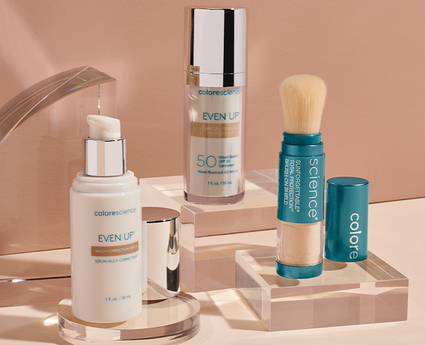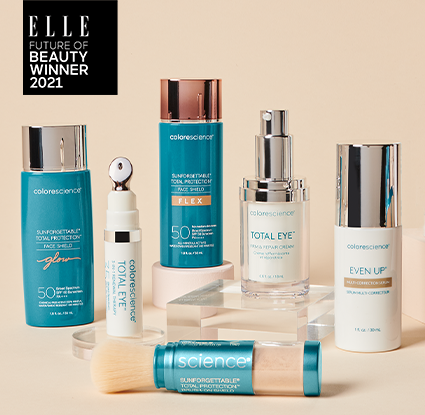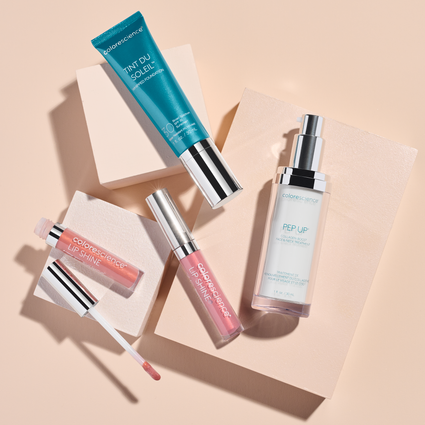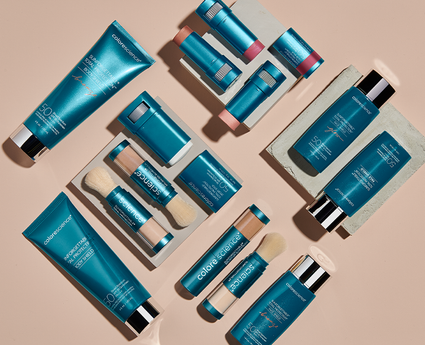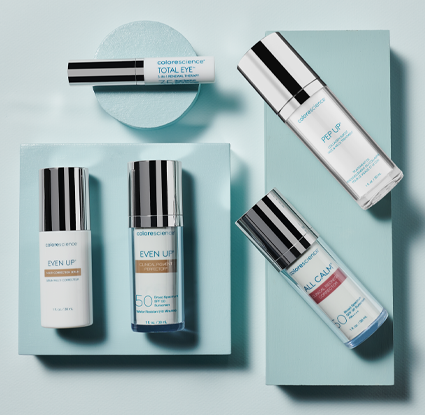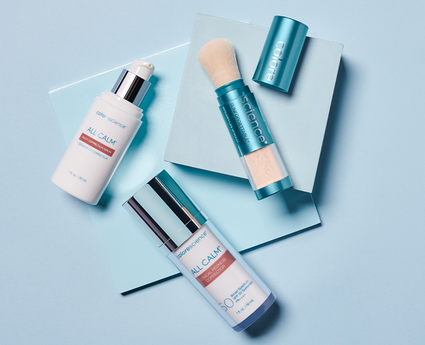Where is Sunscreen Banned? 4 Countries with Bans on Sunscreen
It’s the season for endless sunshine, family beach trips, and tropical vacations—which makes critical SPF protection more important than ever. Although there may be travel restrictions currently in place to protect public safety during the pandemic, state and local governments are slowly easing regulations with summer knocking at the door, allowing cooped up quarantiners to start catching some much-needed vitamin D. But before you book a flight or pack a beach bag, check and see whether there’s a sunscreen ban in effect wherever you're headed.
If you’re going to a state or country that banned sunscreen containing specific ingredients, you’ll need to bring an eco-friendly alternative that can defend you and your family from the harmful effects of the sun, while also preserving the environment.
Keep reading to learn more about how some SPF products are harming marine life, including which sunscreen ingredients you should avoid. Or, use the links below to see where sunscreen is banned and how you can go about UV defense in these locations.
- Why is Sunscreen Banned is it Contains Certain Chemicals?
- What are Bad Sunscreen Ingredients?
- What is Reef-Safe* Sunscreen?
- Where is Sunscreen Banned?
Why is Sunscreen Banned if it Contains Certain Chemicals?
Many consumers are shocked to learn that several states and countries have banned sunscreen from entering their waters due to the damaging toll chemicals take on the environment. There are several active ingredients commonly found in chemical SPF formulas that are used to protect humans but hurt the environment as a result. Several studies, such as the report published by the Archives of Environmental Contamination and Toxicology (2015), have shown that when these chemicals wash off our skin and into the ocean, they have the potential to utterly destroy coral reef ecosystems.
And the damage is unmistakably noticeable—in fact, nearly 90% of coral reefs in the Caribbean have disappeared since the 1980s, according to the study above. It’s a global problem, evident everywhere from Hawaii to the Florida Keys, Southeast Asia, and beyond.
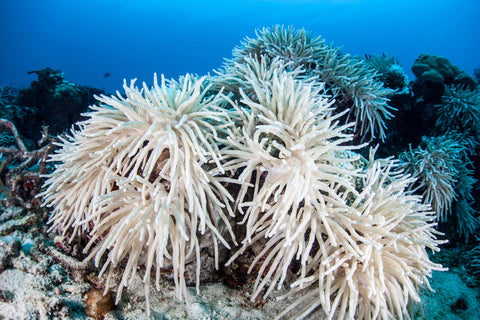
It’s the season for endless sunshine, family beach trips, and tropical vacations—which makes critical SPF protection more important than ever. But before you start packing your bags, check and see whether there’s a sunscreen ban in effect at your token destination.
If you’re headed to a state or country that banned sunscreen containing specific ingredients, you’ll need to bring an eco-friendly alternative that can defend you and your family from the harmful effects of the sun, while also preserving the environment.
Keep reading to learn more about how some SPF products are harming marine life, including which sunscreen ingredients you should avoid. Or, use the links below to see where sunscreen is banned and how you can go about UV defense in these locations.
Shop Reef Safe Sunscreen
Colorescience offers all-natural, reef safe sunscreen—so you can defend yourself from damaging UVA and UVB rays while also defending the environment.
SHOP NOWWhy is Sunscreen Banned if it Contains Certain Chemicals?
Many consumers are shocked to learn that several states and countries have banned sunscreen from entering their waters due to the damaging toll chemicals take on the environment. There are several active ingredients commonly found in chemical SPF formulas that are used to protect humans but hurt the environment as a result. Several studies, such as the report published by the Archives of Environmental Contamination and Toxicology (2015), have shown that when these chemicals wash off our skin and into the ocean, they have the potential to utterly destroy coral reef ecosystems.
And the damage is unmistakably noticeable—in fact, nearly 90% of coral reefs in the Caribbean have disappeared since the 1980s, according to the study above. It’s a global problem, evident everywhere from Hawaii to the Florida Keys, Southeast Asia, and beyond.

Oxybenzone is a chemical UV filter that is found in over 3,500 sunscreen formulas worldwide. It’s toxic to coral reefs and alters their DNA structure. In juvenile species, oxybenzone acts as a fatal endocrine disruptor and causes baby coral to encase itself in its own skeleton and die. The toxicity is also damaging to adult species and causes coral bleaching, which makes them more susceptible to disease and, ultimately, death.
According to an article published by The Guardian, between 6,000 and 14,000 tons of sunscreen lotion wind up in coral reefs every year, much of which contains oxybenzone—and just a single drop of the chemical in an Olympic-sized pool can kill the species.
However, the EWG recommends consumers avoid oxybenzone because the compound can also harm human life. Their findings show that once it passes the skin barrier and enters the bloodstream, the toxin can disrupt hormone regulation, which may affect reproduction and development in men, women, and children.
Therefore, you should avoid this dangerous ingredient regardless of whether you’re heading to a country where sunscreen is banned. Choose safer SPF alternatives to protect your skin, your overall health, and your environment.
What is Reef-Safe* Sunscreen?
Reef-safe* sunscreen provides UV protection without polluting the ocean. It contains active mineral ingredients, such as zinc oxide and titanium dioxide that rest on the outer layer of the skin to deflect the sun’s rays. Recently, the FDA confirmed these ingredients are safe and effective. The organic minerals are derived from nature and gentle to use, so they’re harmless to wear when swimming near coral reefs.
Most countries that ban sunscreen allow beachgoers to apply mineral sun protection for face and skin as an alternative, preferred form of UV defense. Remember, unprotected sun exposure can harm the skin in as little as 15 minutes with immediate and lasting consequences, so it’s critical to maintain sun protection daily even though a chemical sunscreen ban may be in effect.
Where is Sunscreen Banned?
Below, is a list of states and countries where chemical sunscreen is banned or legislation is pending.Be sure to pack all-natural, mineral sunscreen (or tinted mineral sunscreen) when visiting these locations, and to stay informed as more coastal regions join the fight against harmful chemicals polluting our oceans.

United States Sunscreen Ban
There are several states and territories in the U.S. where sunscreen is banned.
- Hawaii Sunscreen Ban
Hawaii was the first state to ban sunscreen after it passed a law in 2018 that prohibits the sale of SPF chemicals believed to endanger coral reefs, including oxybenzone and octinoxate. The law goes into effect in 2021.
- Key West Sunscreen Ban
In 2019, the Key West City Commission passed a law banning the sale of sunscreen within the city limits of these Florida beaches. As of Jan. 2021, the Key West sunscreen ban prohibits the purchase of sunscreen containing oxybenzone or octinoxate.
- California Sunscreen Ban
Taking cues from HI and FL, California is also considering a sunscreen ban with a similar model. Violations could lead to fines up to $500, but the legislation is still pending.
- Virgin Islands Sunscreen Ban
The U.S. Virgin Islands is the first American entity to enforce a sunscreen ban, as the legislation that went into effect in Jan. 2020 not only prohibits the sale of harmful sunscreen chemicals but also prohibits locals and visitors from possessing or using them.
Aruba Sunscreen Ban
Aruba is another country where sunscreen is banned. Its Parliament passed a law that bans oxybenzone in 2019, which went into full effect in 2020.
Bonaire Sunscreen Ban
In the Caribbean, the island of Bonaire voted to ban the sale of sunscreen that’s known to kill coral reef by 2021.
Palau Sunscreen Ban
Palau is the first country that banned sunscreen nationwide. As of Jan. 2020, the Palau sunscreen ban states that commercial sunscreen products containing toxic chemicals are not allowed to be worn or purchased on its islands.
Australia Sunscreen Ban
Despite the devastation that’s occurred to Australia’s Great Barrier Reef, the country is reluctant to issue a nation-wide sunscreen ban. However, there are other restrictions in place designed to protect its delicate ecosystem.
Is Colorescience Sunscreen Banned?
No. Colorescience offers UV protection that’s safe to apply on skin and swim with in water—even at locations where sunscreen is banned. Rather than using harmful chemicals to filter UV light, our formulas contain active mineral ingredients that physically deflect sun rays and prevent them from damaging the skin.
Our proprietary formulas are packed with wholesome, high-quality ingredients that resist water for up to 80 minutes, and you should reapply every two hours per best practice.
The Colorescience TOTAL PROTECTION™ collection of products is guaranteed to be coral reef safe* and cruelty-free, because we believe that you should feel good about anything you apply on your body. We use gentle, natural ingredients and offer sunscreen safe for kids to keep the entire family protected—minus the use of chemicals, harsh additives, or cheap fillers.
All of our SPF products are travel-ready and TSA-approved for flight, whether you’re looking for a powder, liquid, or stick formula sunscreen for travel. And, in addition to broad-spectrum UVA/UVB coverage, our proprietary EnviroScreen® technology adds an extra layer of defense against free radicals caused by environmental aggressors such as pollution, blue light, and infrared radiation.
Support the sunscreen ban, save our oceans, and safely protect your skin by shopping with Colorescience, the skincare company that prioritizes health above all else.
*Reef safe as defined by Hawaii’s legislation related to the ban of SPF sunscreen products that contain oxybenzone or octinoxate.
